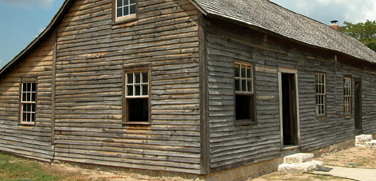
| ThE
HiStOrY | CoOl
FaCtS | NeAt PlAcEs |
Facts: Pony Express National Historic Trail Before railroads or automobiles, people in America had to travel by foot, horse, boat or wagon. Some of these routes from our nation's early days still remain today as reminders of our historic past. A National Historic Trail (NHT) such as the Pony Express NHT is an extended trail that follows original routes of travel of national historical significance. In 1995, the National Park Service established the National Trails System Office in Salt Lake City, Utah. The Salt Lake City Office administers the Oregon, the California, the Mormon Pioneer and the Pony Express NHTs. The National System Trails does not manage trail resources on a day-to-day basis. The responsibility for managing trail resources remains in the hands of the current trail managers at the federal, state, local and private levels. The Office was established to improve interstate and interregional coordination. Specific responsibilities of this trails office include coordinating and supporting the protection of trail resources, marking and interpreting the trails, designating and marking an auto-tour route and identifying and certifying high-potential sites. In 1968, Congress enacted the National Trails System Act and in 1978, National Historic Trail designations were added. The National Historic Trails System commemorates these historic routes and promotes their preservation, interpretation and appreciation. National Historic Trails recognize diverse facets of history such
as prominent past routes of exploration, migration, trade, communication
and military action. The historic trails generally consist of remnant
sites and trail segments, and thus are not necessarily contiguous.
Although National Historic Trails are administered by federal agencies,
land ownership may be in public or private hands. Of the 11 National
Historic Trails, nine are administered by the National Park Service,
one by the USDA Forest Service and one by the Bureau of Land Management. |
 |
| BaCk to PaRkS |